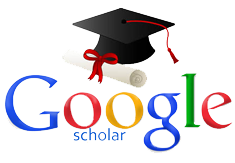Pengaruh Metode Ekspresi Bebas Dengan Teknik Kolase Terhadap Hasil Belajar Seni Rupa Dua Dimensi Siswa Kelas IV
DOI:
https://doi.org/10.31004/jpdk.v4i5.7789Abstract
Tujuan penelitian ini untuk mengetahui ada atau tidak adanya pengaruh metode ekspresi bebas pada hasil belajar seni rupa dua dimensi siswa kelas IV. Penelitian ini merupakan penelitian eksperimen bentuk eksperimen semu (Quasi Eksperiment), desain yang digunakan adalah “Desain Nonequivalent Control Group Design, dengan pemilihan kelompok yang pilih berdasarkan hasil pretest”. Populasi penelitian ini adalah seluruh siswa kelas IV SD Negeri 12 Air Kumbang. Sampel penelitian ini adalah kelas IV.A (eksperimen) dan kelas IV.B (kontrol). Dengan jumlah siswa 48 siswa kelas IV.A sebanyak 24 siswa dan kelas IV.B 24 siswa. Pengambilan data dilakukan dengan menggunakan tes hasil belajar yang berupa pretest dan posttest. Berdasarkan hasil perhitungan bahwa hasil belajar pada tes akhir (posttest) kelas eksperimen sebesar 77,54 dan kelas kontrol sebesar 63,52, sedangkan rata-rata tes awal (prestest) kelas eksperimen sebesar 44,4 dan kelas kontrol sebesar 47,25. Dengan demikian, terjadi peningkatan setelah diterapkannya metode ekspresi bebas dengan teknik kolase. Hasil penelitian menunjukan nilai thitung sebesar 4,1338. Ini mnunjukan bahwa thitung = 4,1338 ? ttabel = 1,67722. Dengan demikian dapat disimpulkan bahwa Ho ditolak dan Ha diterima atau terdapat pengaruh metode ekspresi bebas terhadap hasil belajar seni rupa dua dimensi siswa kelas IV SD Negeri 12 Air Kumbang.Downloads
Published
2022-10-21
How to Cite
Adawiya, N. ., Hermansyah, H., & Noviati, N. (2022). Pengaruh Metode Ekspresi Bebas Dengan Teknik Kolase Terhadap Hasil Belajar Seni Rupa Dua Dimensi Siswa Kelas IV. Jurnal Pendidikan Dan Konseling (JPDK), 4(5), 6749–6753. https://doi.org/10.31004/jpdk.v4i5.7789
Issue
Section
Articles
License
Copyright (c) 2022 Nurul Adawiya, Hermansyah, Noviati

This work is licensed under a Creative Commons Attribution-ShareAlike 4.0 International License.
Authors retain copyright and grant the journal right of first publication with the work simultaneously licensed under a Creative Commons Attribution-ShareAlike 4.0 International License that allows others to share the work with an acknowledgement of the works authorship and initial publication in this journal. Authors are able to enter into separate, additional contractual arrangements for the non-exclusive distribution of the journals published version of the work (e.g., post it to an institutional repository or publish it in a book), with an acknowledgement of its initial publication in this journal. Authors are permitted and encouraged to post their work online (e.g., in institutional repositories or on their website) prior to and during the submission process, as it can lead to productive exchanges, as well as earlier and greater citation of published work (See The Effect of Open Access).





.png)










